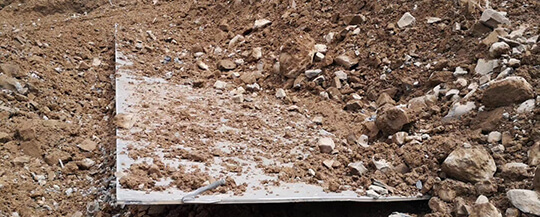After the explosion-welded stainless steel cladding plate is processed into a head, the RT film of the weld seam often shows a corrugated shadow in the negative film. A large number of various experimental studies have confirmed that it is not a "crack" defect in the weld or heat-affected zone and the base material, but is an indication of the deformation of the wave-shaped boundary of the explosive welding.
Shadows and cracks can be distinguished from their shape and blackness. The biggest characteristic of cracks is that they are sharp at both ends and have different blackness. It can be roughly divided into two types: 1. linear; 2. tear-shaped, showing an area on the film. The stainless steel clad based on the composite board is mainly a corrosion-resistant lining, regardless of its strength or rigidity and stability, for which the following provisions are made:
1. The ripple shadow appears on the RT film according to the JB4733--96 standard. The UT meets Article A7 in Appendix A, and no reprocessing is required. If the UT finds that the defect wave exceeds the standard, it must be repaired. After the repair, it is checked by RT filming. If there is a corrugated shadow display, it is still verified by UT and supplemented by PT.
2. UT is to be performed on the inner surface of the seal head and the part where the straight edge is welded to the container cylinder, and also meets Article A47 in Appendix A of JB4733--96, and the UT conformity report is issued before it can be shipped.
When accepting the head of the stainless steel cladding plate, we should present these regulations to the customer, obtain the customer's approval, and sign the agreement.
